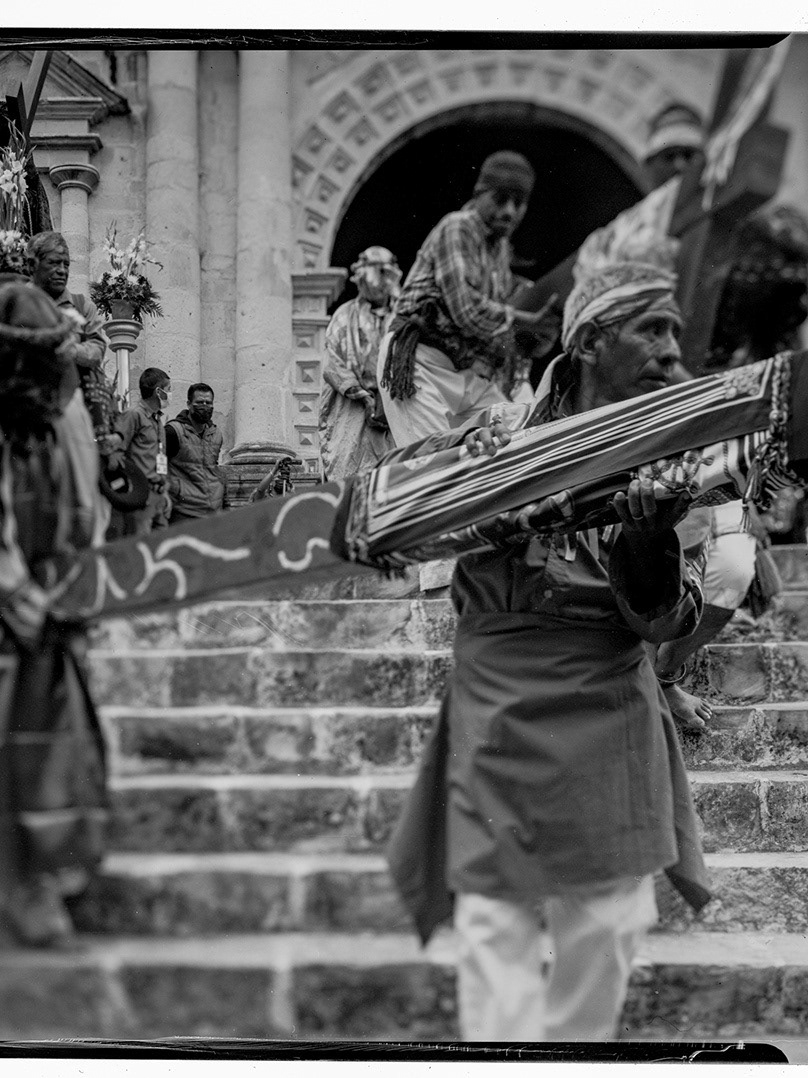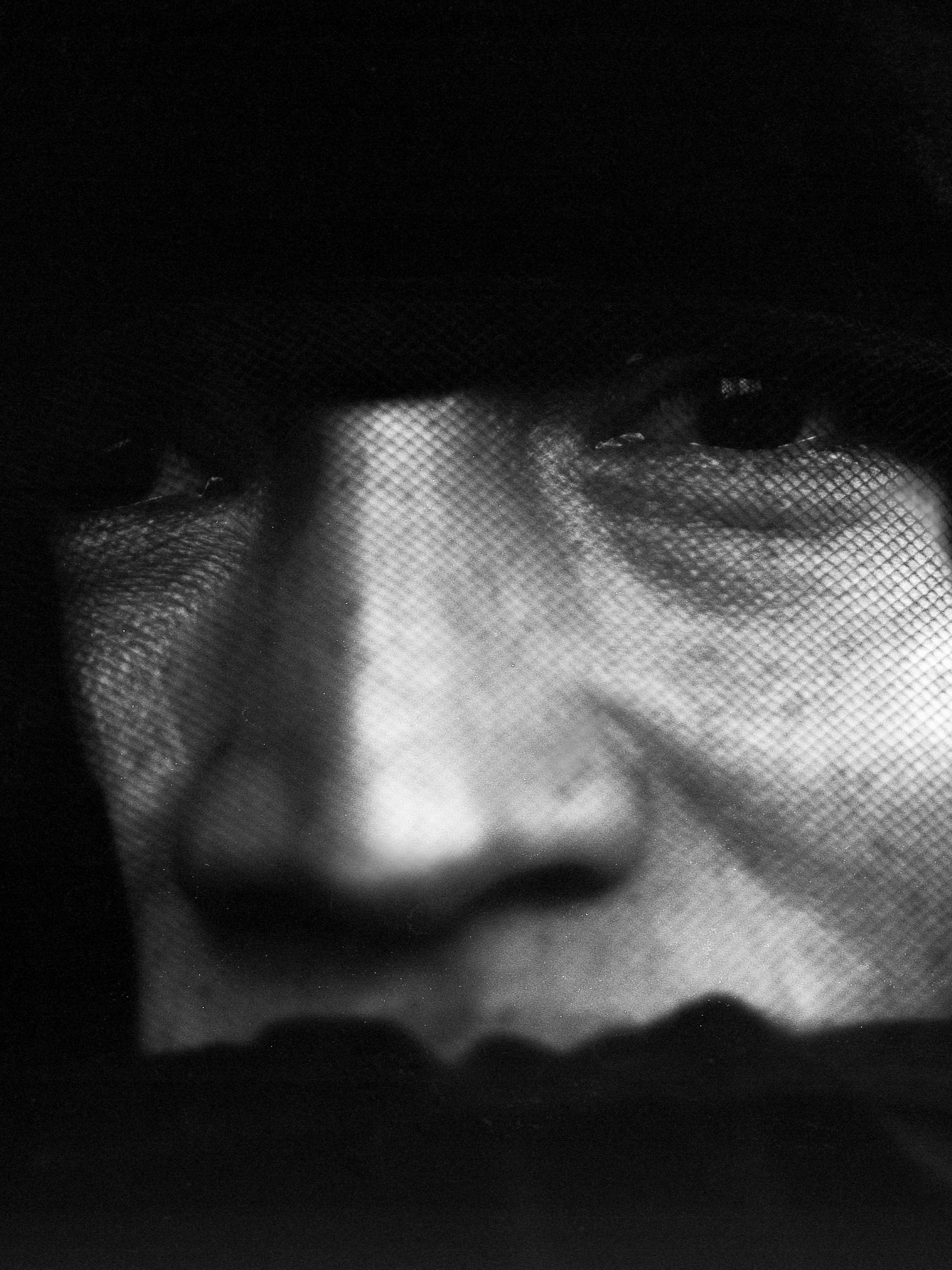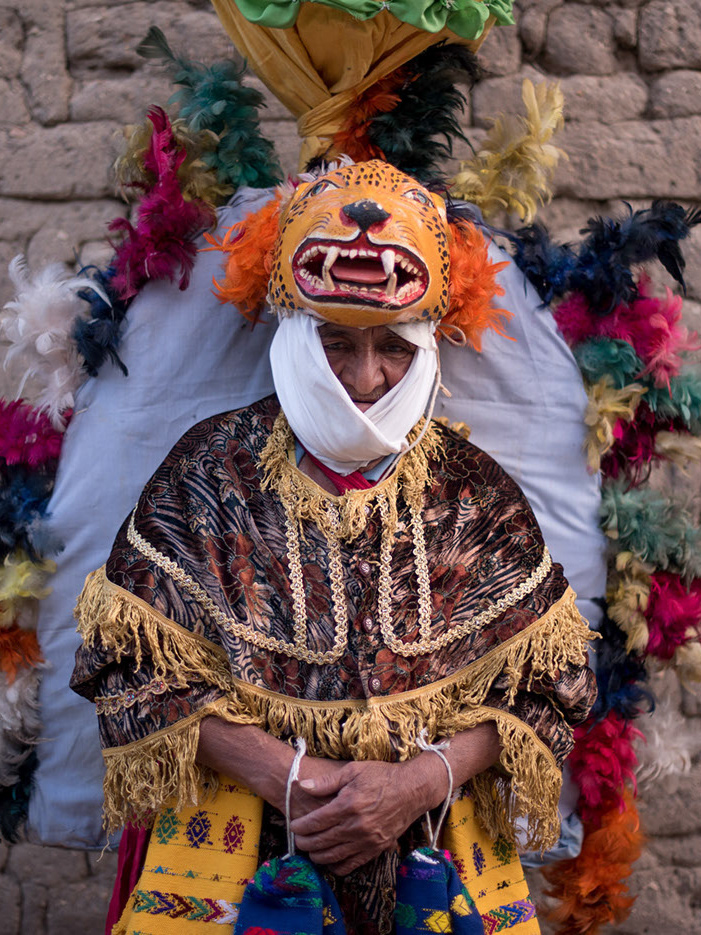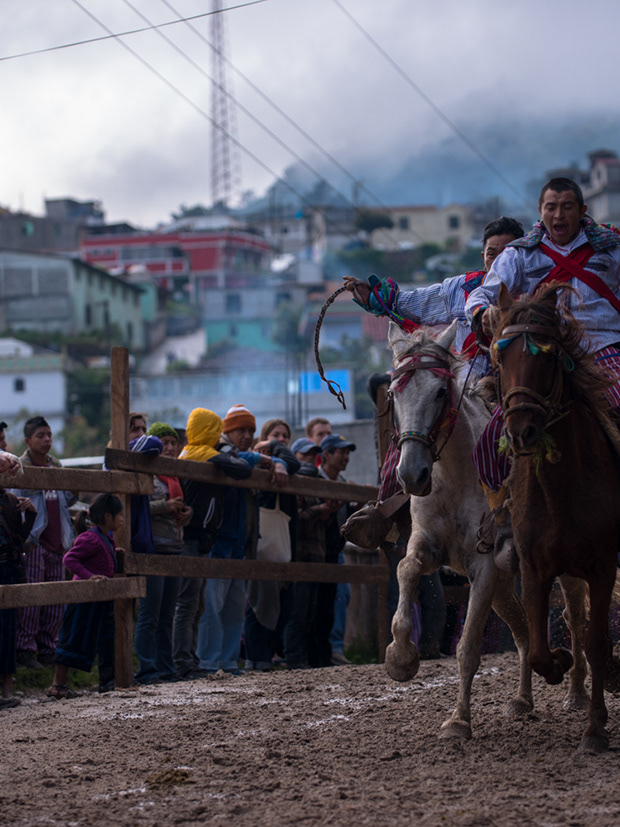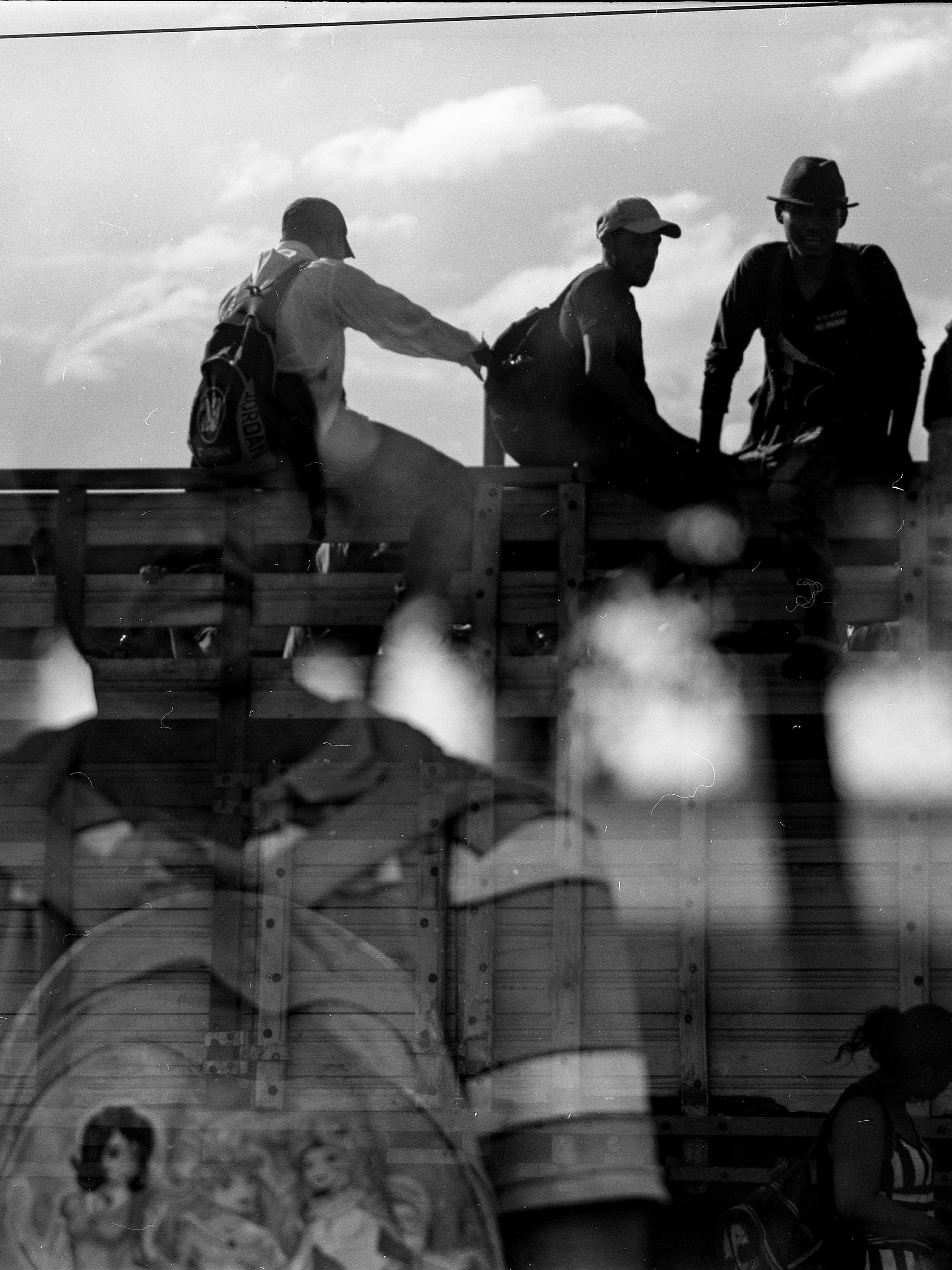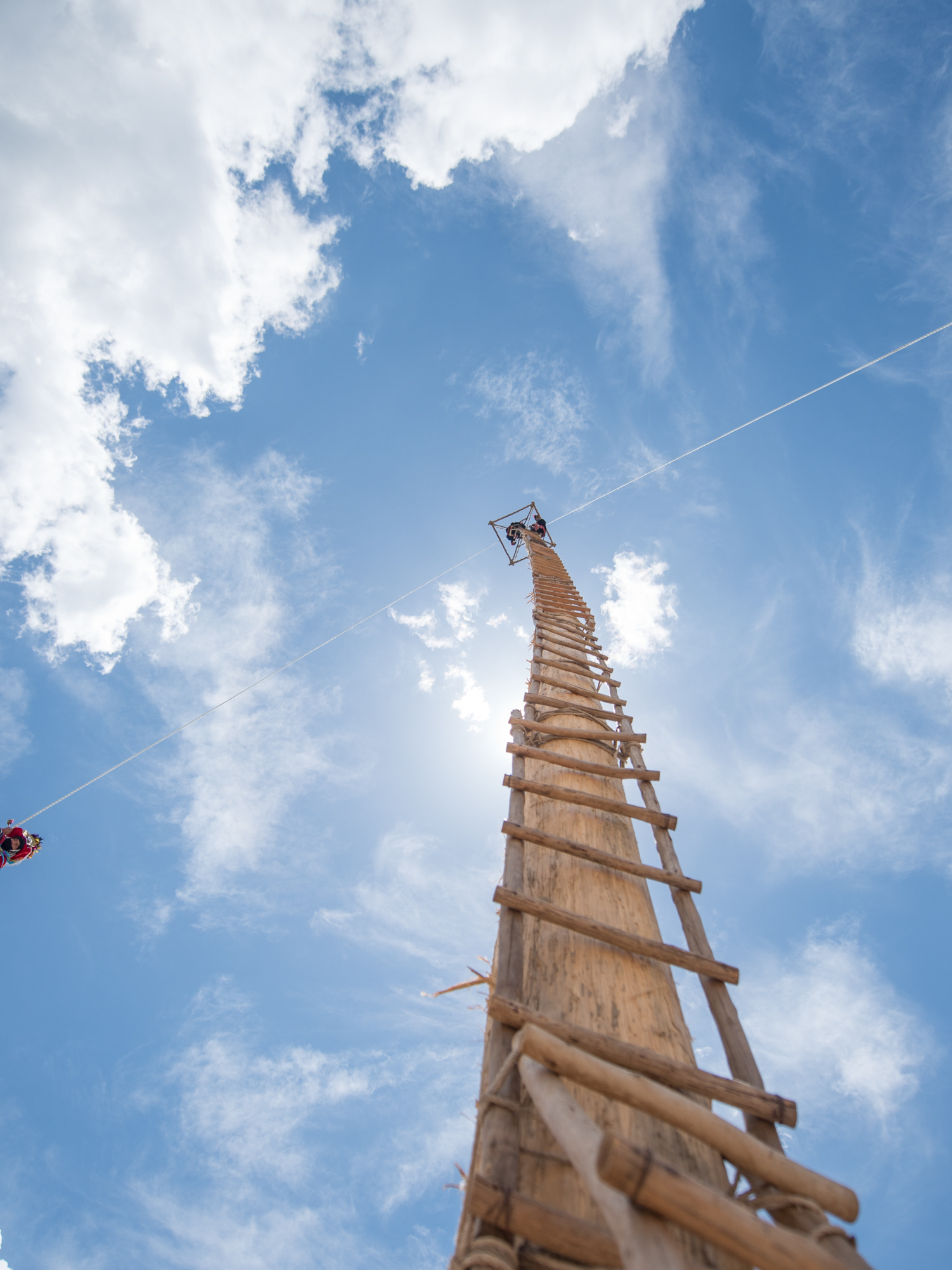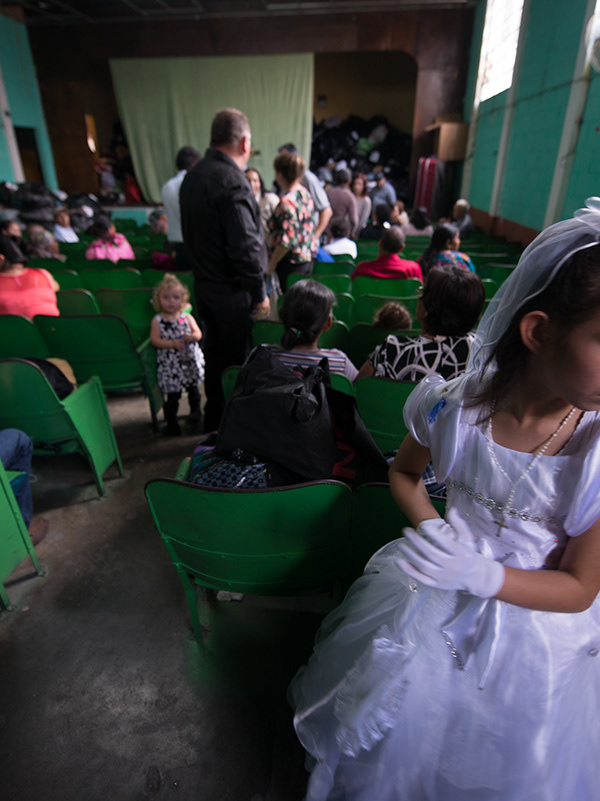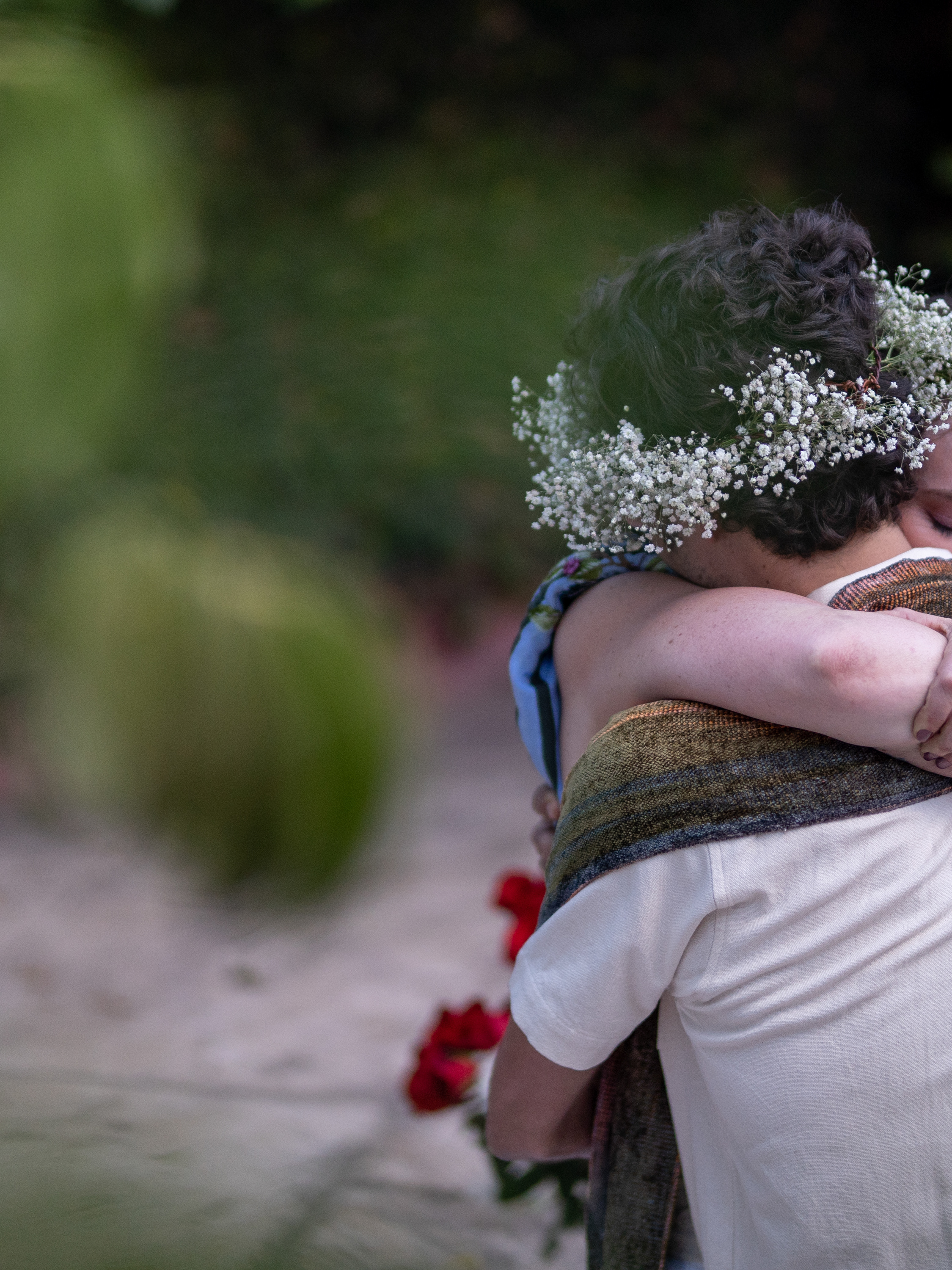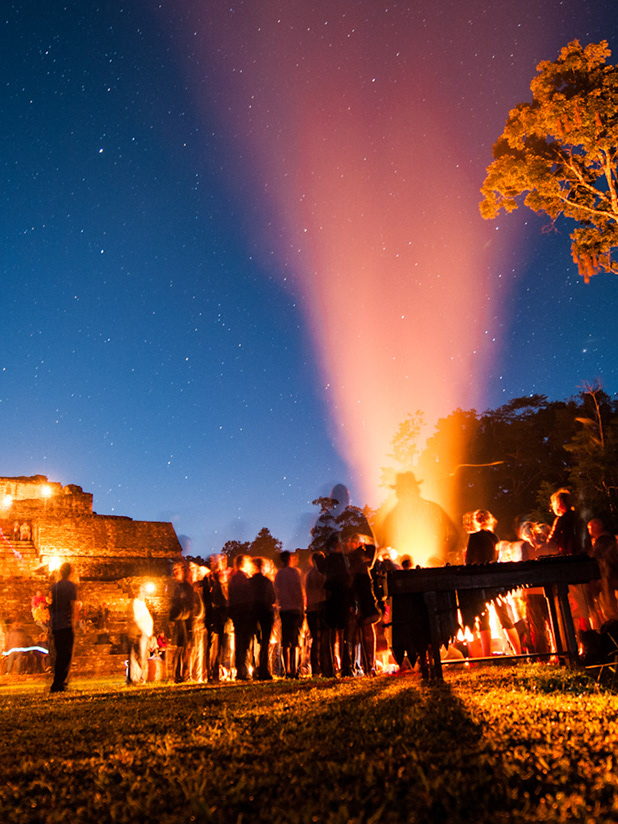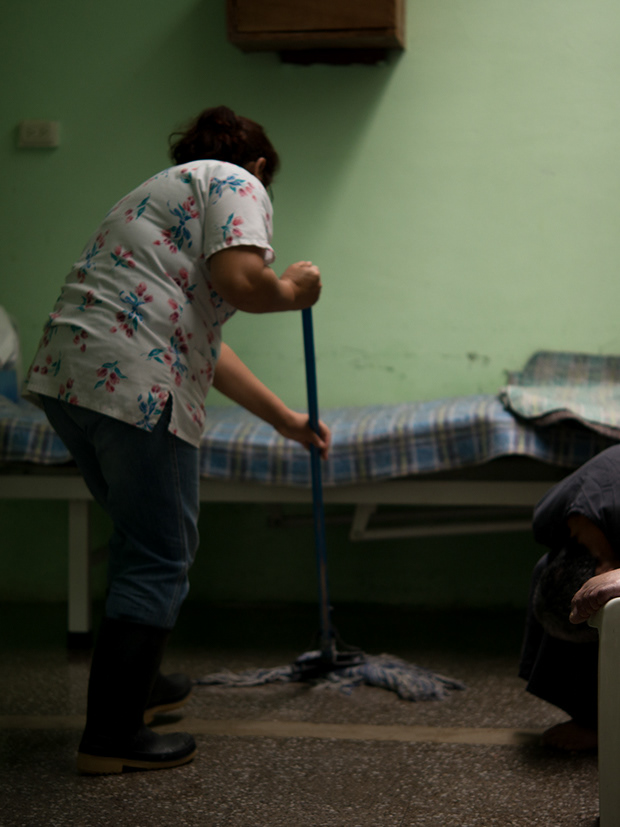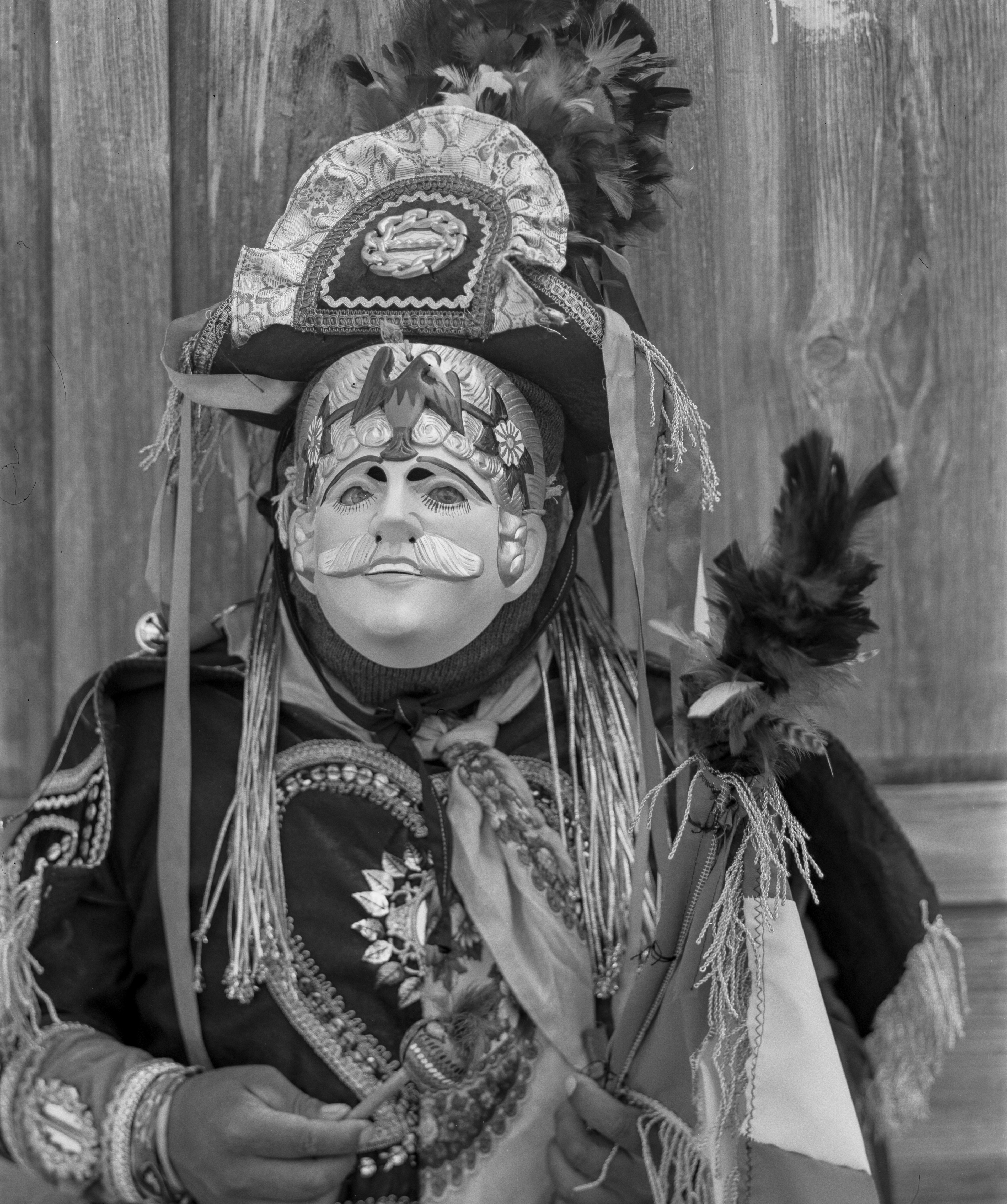
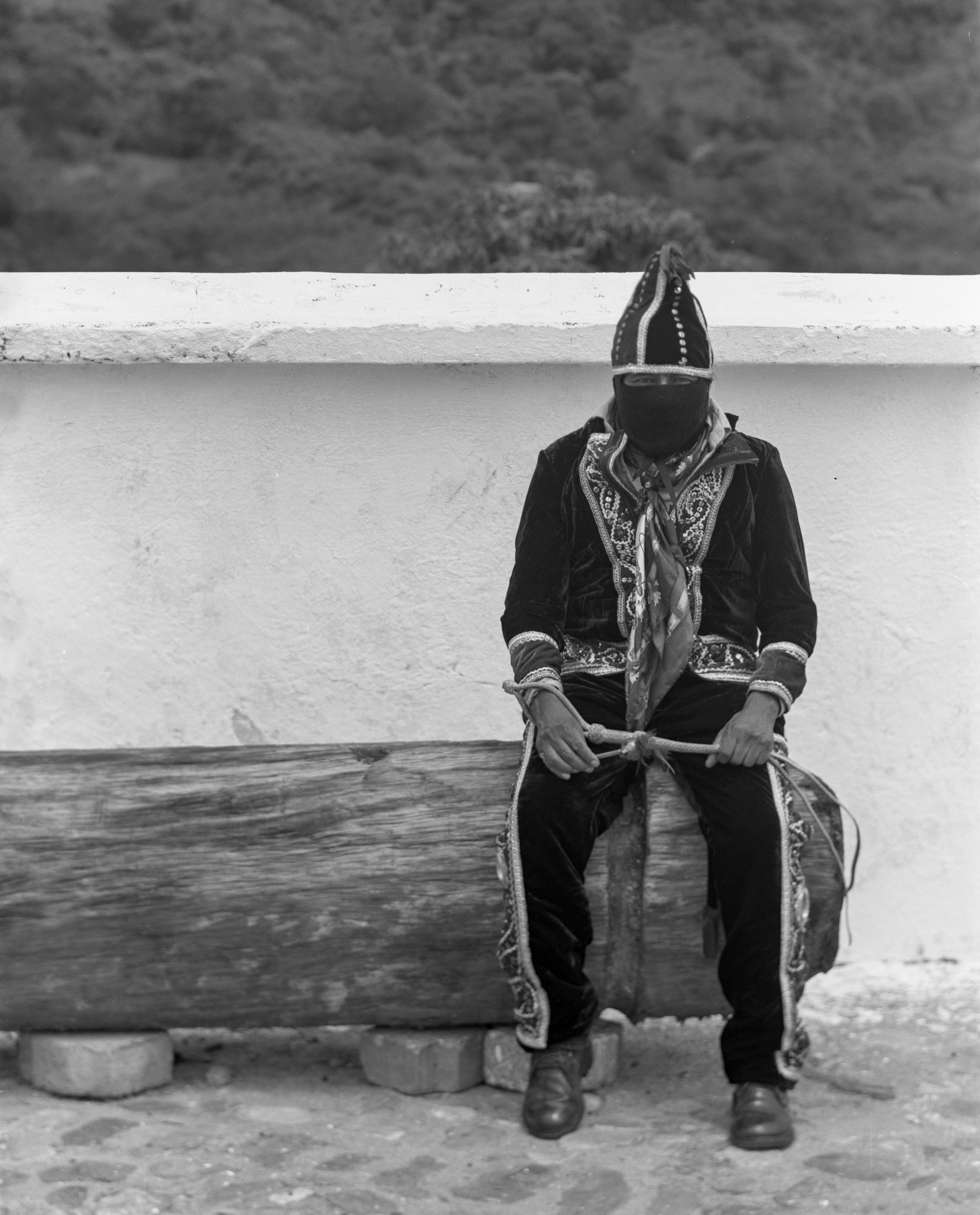
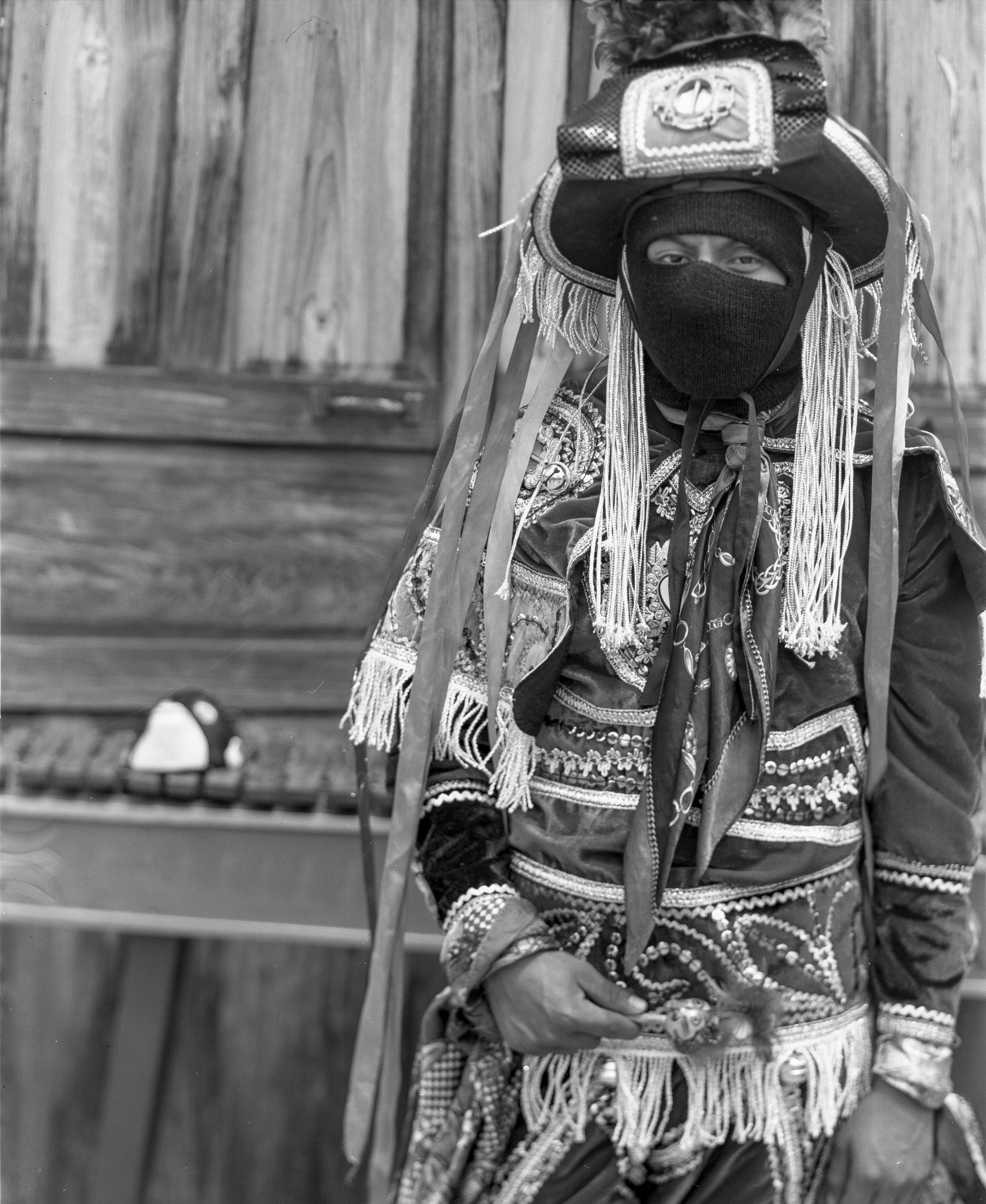
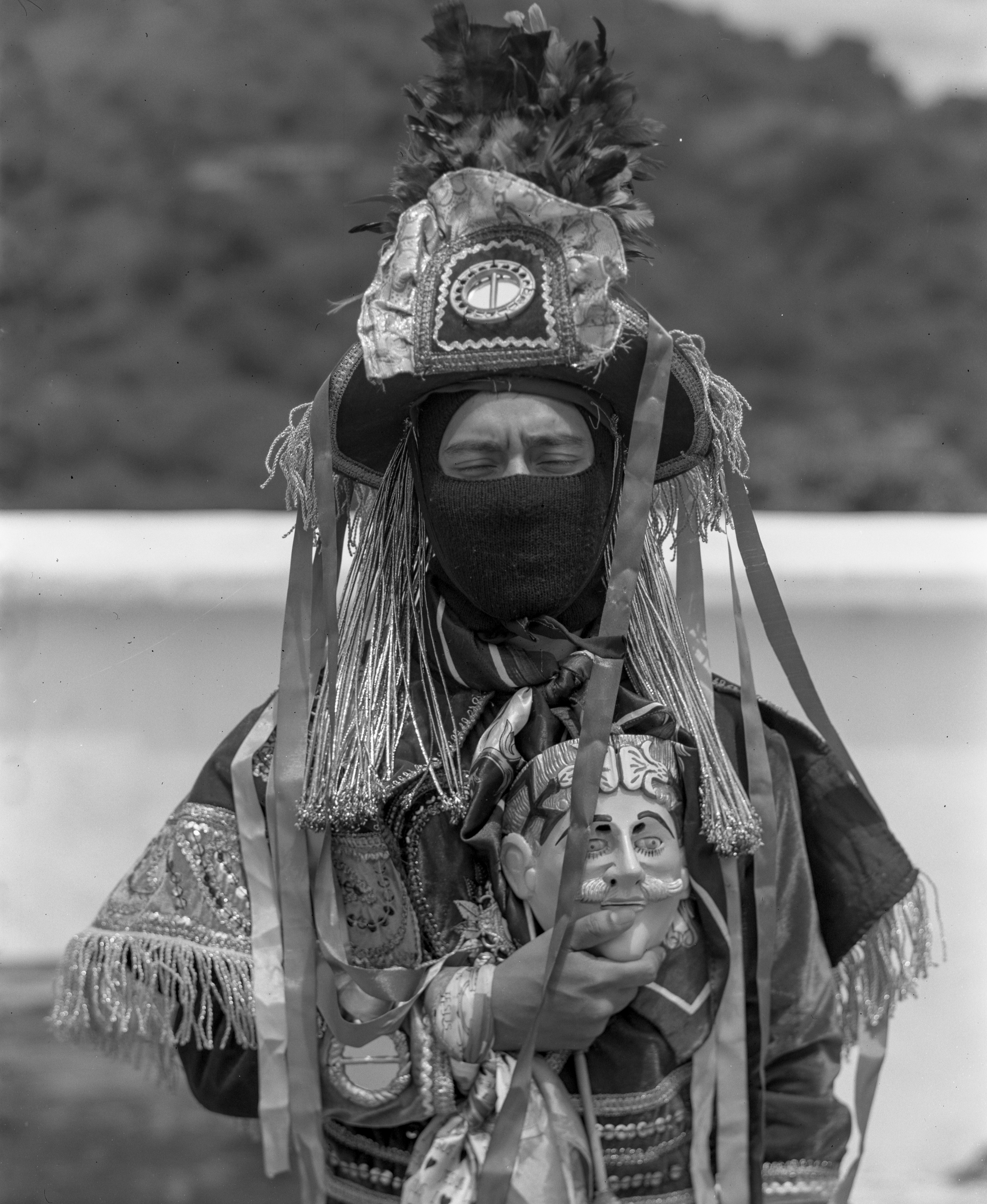
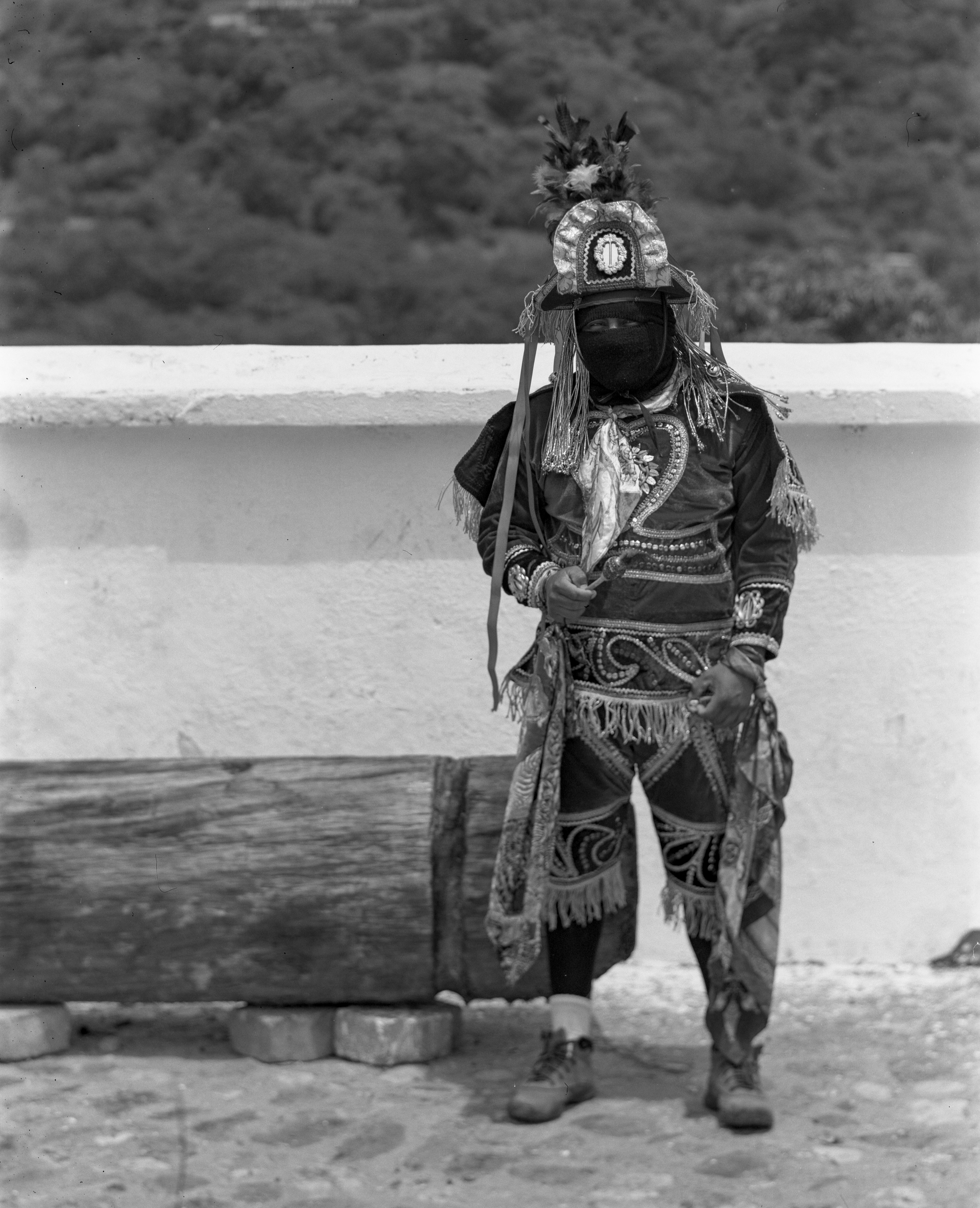
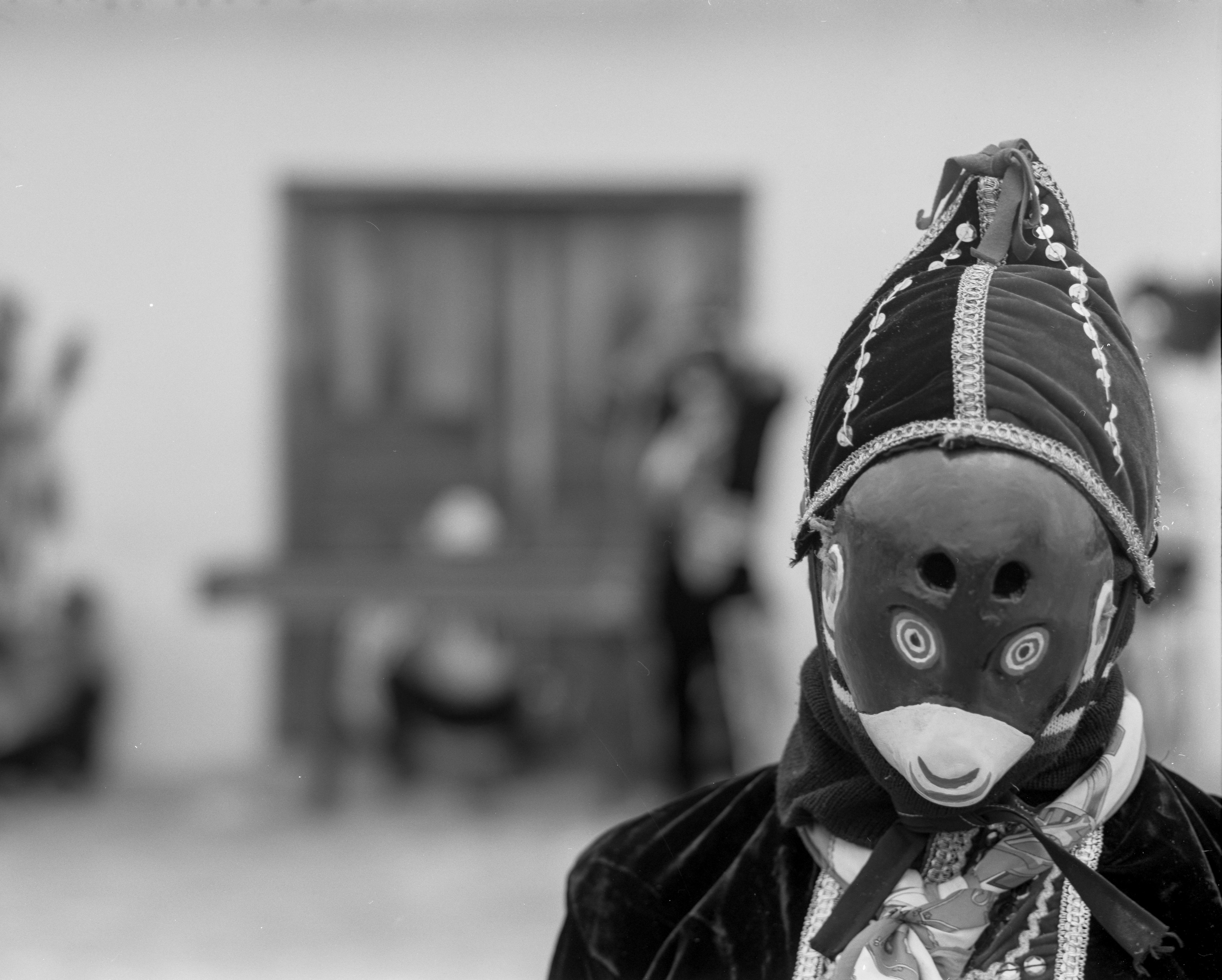
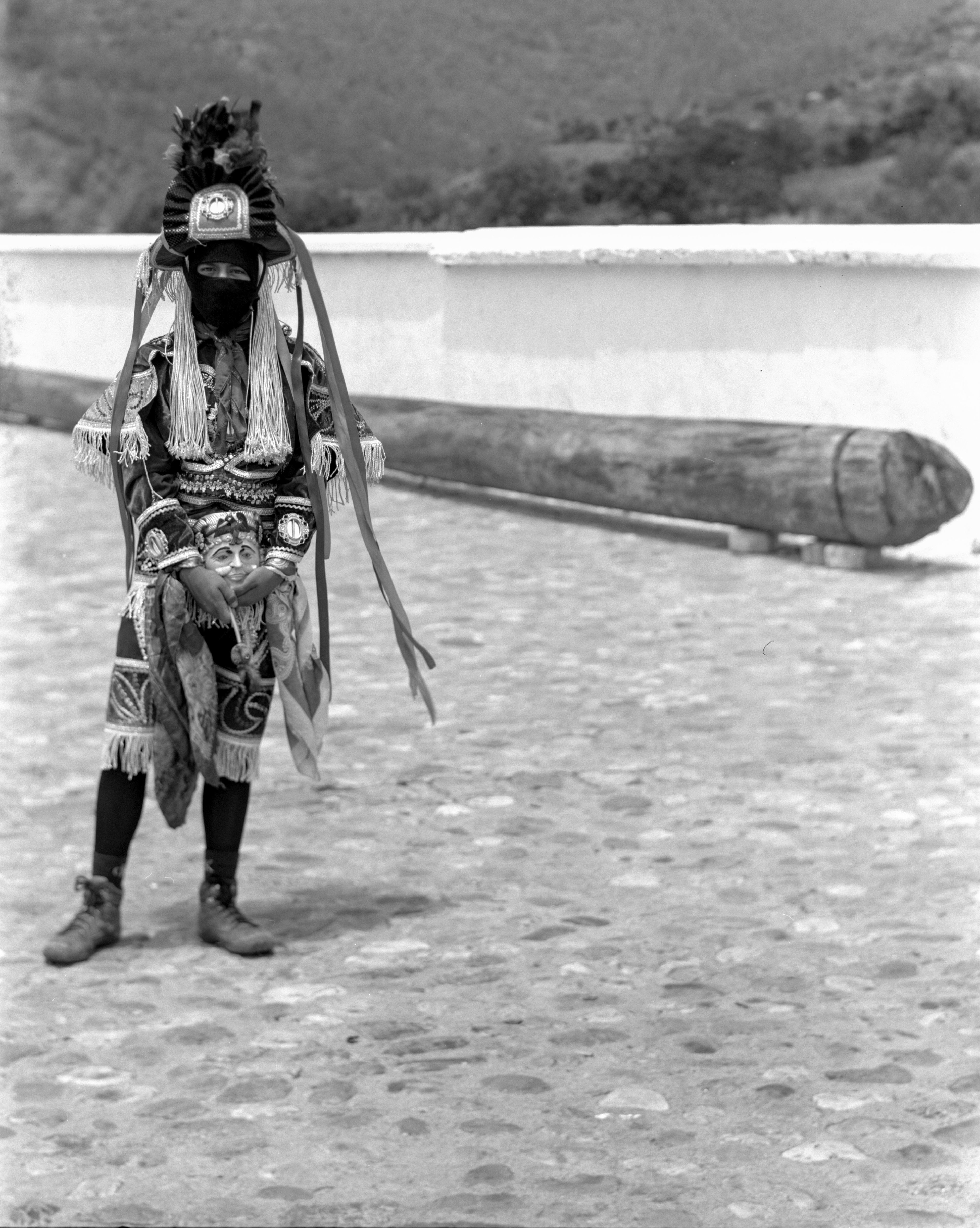
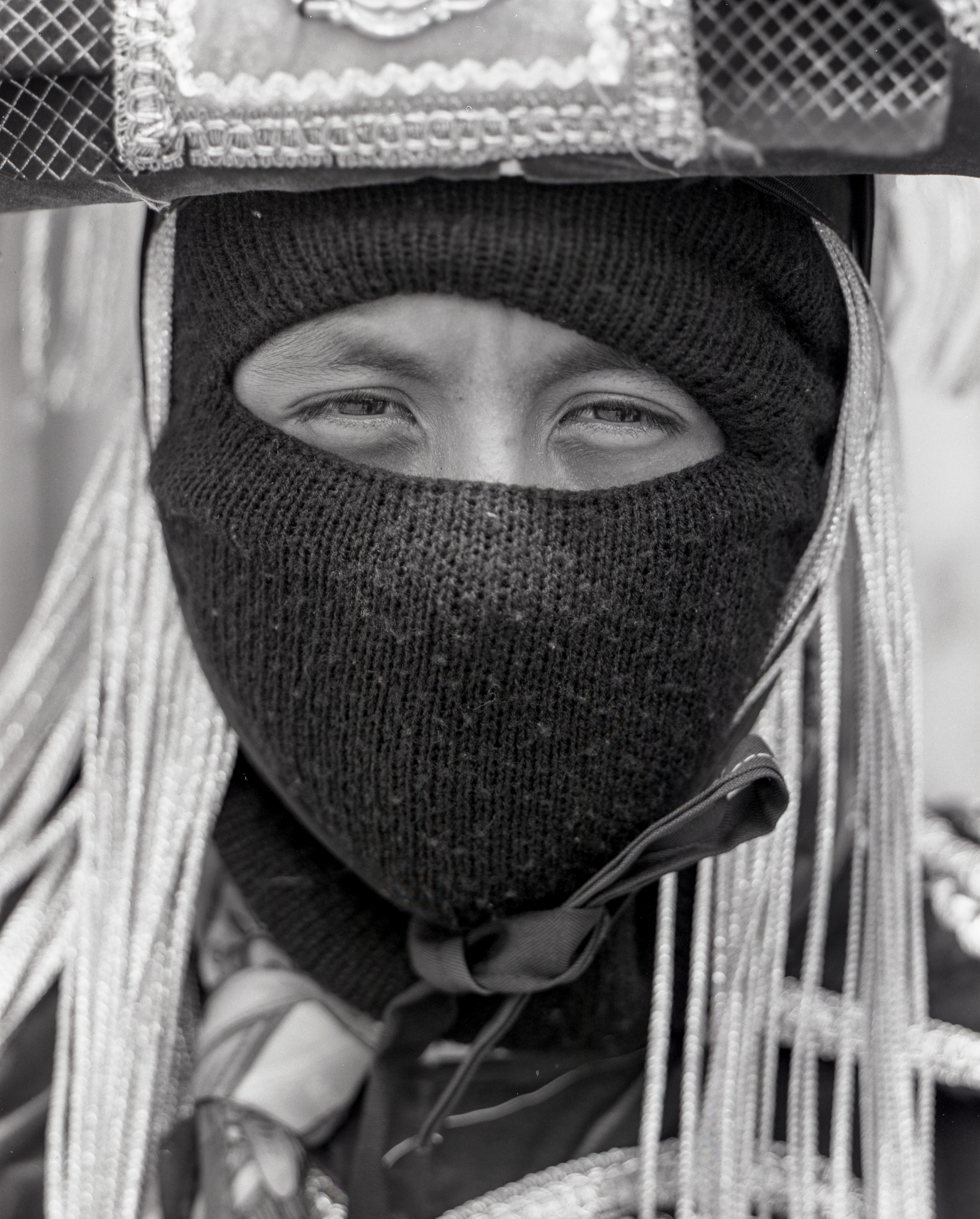
Legend has it that, in the 1700s, the local chiefs of Cubulco, a village located some 450 kilometres from Antigua Guatemala, all shared a dream. In this vision, St. James demanded they performed a ritual dance in which a pair of dancers would spin down from a tree only using a rope. They diligently complied and El Palo Volador, the dance of Angels and Monkeys, was born.
A group of men trek through the pine forest near the mountains of Chuaberana, Baja Verapaz. They search for a marked tree. Once the 40-meter tall pine is found, some of the men hug it to check how straight it actually is. The local spiritual guide places yellow candles and incense at the base of the tree. He begins a ritual to the sound of a marimba up in a hill. A man with a drum bangs an trance-like heart beat through the whole affair.
The ritual concludes and one of the members of “La Cofradía del Mono” (The Confraternity of the Monkey) climbs up the tree and ties several ropes that will help direct the tree’s fall once it is cut down. The men take a chainsaw to its trunk and bring it down over the course of an hour as the others watch. Cracks are heard as the tree plunges onto the side of the mountain.
Hundreds men quickly tie sticks to the trunk to use them as handlebars to push it all the way to the road where a tractor awaits for them. The first few hours of pushing are mostly futile though, so the men take a quick lunch break to regain their strength. While the rest of men eat, the spiritual leader splashes Cuxa (a local version of moonshine, basically) onto the trunk and strikes it with a “chicote” (a leather whip) to get it to move.
In the town’s square, a small ritual is led by the sacristan of the local Catholic church, Juan Pablo Camayá. He buries three pounds of pork meat in the hole that will hold the trunk once it’s lifted. He also lights a ritual fire and walks around the pole with incense to ask for protection for the men who will perform the dance. After he’s done, he makes his way to the top of the church and rings out a melody on the church’s bells to signal the lifting of el Palo Volador.
A week goes by and the pole towers over everything else in the town’s main square. It’s been largely undisturbed since it was lifted. During night time, the eldest “Monkey” holds a ritual in his house in which all of the tools for the dance are blessed over a night of vigil. A marimba rings out a tune for the dancers of El Palo Volador to practice their dance while a spiritual guide blesses the masks they will use in the final ceremony.
The following morning, the dancers put on their full costumes and masks. They follow La Mica (the female monkey), a man dressed as a monkey carrying the horqueta while carrying a monkey dancer in a wooden structure that will help the descending flyers during the dance. The Monkey dancer on top brandishes incense from the very same clay thurible that was used in the ritual in which the tree was cut down. After a two-kilometer walk, the party arrives at the town’s main square.
The Monkey Dancers climb the giant trunk and make preparations for the ritual dance at the very top. Once the ropes are safely tied, the first pair of Angel Dancers climb the tree. They secure themselves to the trunk and eventually push themselves away from the top of the pole. The ropes were a bit too tight, so they keep kicking themselves away from it. The second set of dancers fly across the cloudy sky as the marimba plays its song. They spiral their way down to the empty park. No one is there to watch this year’s first flight.
This is a dance they then repeat over a two-week period at the confraternity’s will. Whenever they see it fit, the dancers will climb up the tree and spin their way down. The largest crowd for the dancers gathers on June 25th, the day of St. James or Santiago Apostle, the patron saint of Cubulco.
the original text appeared in www.comvite.com
